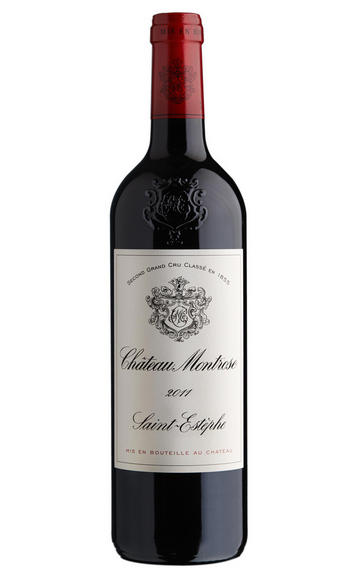
2011 Château Montrose, St Estèphe, Bordeaux
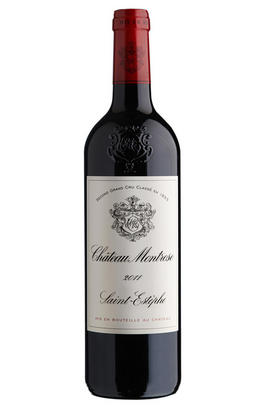
Critics reviews
Bright dark ruby. Expressive, soil-driven aromas of blackberry, raspberry, rose petal and minerals. Bright and juicy, with flinty black fruit and mineral flavors nicely framed by harmonious acidity. Finishes lightly saline and energetic, with dusty, fine-grained tannins. Very nicely balanced Montrose but I hope the tannins won't outlive the fruit.
Ian D'Agata, vinous.com (July 2014)
Tasted at the chteau, the 2011 Montrose is a blend of 63% Cabernet Sauvignon, 22% Merlot, 12% Cabernet Franc and 3% Petit Verdot picked between 2-27 September. The nose does not possess the exuberance of the 2008, a little conservative and lacking personality by comparison. It does repay aeration though and after some time, there are attractive cold stone/limestone notes that begin to emerge.
The palate is medium-bodied with fine, grippy tannin. It is a solid Montrose, quite stout, perhaps not the greatest fun you will ever have with a Claret, yet with admirable depth on the lightly spiced, cedar-infused finish. Whilst I prefer the 2008 Montrose, the 2011 is a decent off-vintage that should offer 20 years of drinking pleasure.
Neal Martin, Wine Advocate (September 2016)
This has aromatic range and depth of fruit, offering enticing dark currant, plum and blackberry notes that show lots of savory herb and racy chalk notes, with a long, gravelly finish. A terrific effort in one of the more heterogeneous appellations of the vintage.
Wine Spectator's 2011 Top-Scoring Red Bordeaux
James Molesworth, Wine Spectator, (April 2012)
A strong effort, the 2011 Montrose exhibits a dense ruby/purple color in addition to abundant black currant and boysenberry fruit notes intermixed with white chocolate, damp earth, truffle and camphor. Medium to full-bodied with sweet tannin and impressive concentration, this blend of 62% Cabernet Sauvignon, 22% Merlot, 12% Cabernet Franc and 4% Petit Verdot hit nearly 13% natural alcohol (relatively high in Bordeaux, but lower than the 13.2% in 2009 and 13.8% in 2010). The 2011 should drink well for 15 or more years.
Robert Parker, Wine Advocate (April 2012)
About this WINE
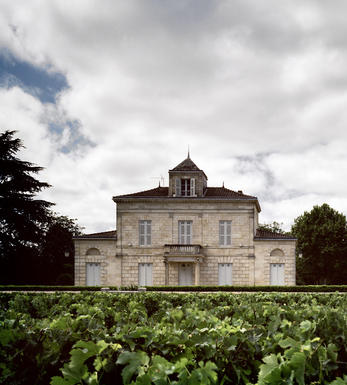
Château Montrose
Château Montrose is part of our Spotlight on sustainability series. You can view the full range here.
Château Montrose is one of the leading wine properties of St.Estéphe, and produces some of the longest-lived wines in the Médoc. Montrose had been owned by Jean-Louis Charmolue from 1962 until 2006, when it was sold to Martin and Olivier Bouygues, owner of the eponymously named construction firm Bouygues, is located in the east of the appellation, just north of the hamlet of Marbuzet, on a gravel knoll only 800 metres from the Gironde estuary. The proximity of the estuary ensures a microclimate that protects against frost, and the vines, which lie on deep clay-gravel soils, benefit from a south-easterly aspect.
Montrose's wine is typically a blend of 65% Cabernet Sauvignon, 25% Merlot and 10% Cabernet Franc and is matured in oak barriques (30% new) for 18 months.
Montrose wines are traditionally deeply coloured, austere and powerful when young, yet possess superb ageing potential, and when mature are quintessential St.Estèphe clarets. Montrose is classified as a 2ème Cru Classé.
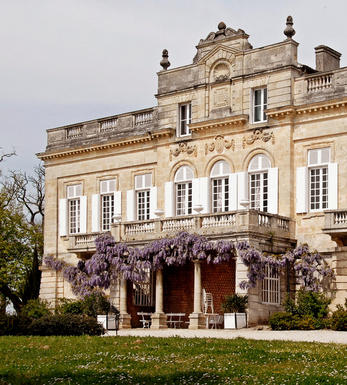
Saint-Estèphe
Saint-Estèphe is the northernmost of the most important communes of the Médoc and borders Pauillac on its southernmost border, with only a gully and stream separates it from Ch. Lafite. To the north lies the Bas-Médoc.
Saint-Estèphe is defined by the depth of its gravel, which is ubiquitous but of varying depths and occasionally very shallow, when clay predominates. This keeps the soil cooler and wetter than its counterparts so that the wines can appear fresh in lighter vintages, but superbly successful in hot, dry years.
The best châteaux in the south of the commune have the deepest soil and the thickest gravel. Cos d'Estournel has an exceptional terroir with its vineyards being located on a south-facing ridge of gravel with excellent drainage.
Saint-Estèphe is the least gravelly of main Médoc communes and in the north of the commune the vineyards are heavier and more clay-based leading to a rustic style of wine being produced.
The wines can appear austere in youth with a discernable ferric note at some châteaux, but the best typically display good depth of colour, pronounced acidity an tannins in youth and are exceptionally long-lived. At their best, they are the equal of almost any Bordeaux. The well-regarded St Estèphe co-operative controls the production of about half the appellation.
Recommended Châteaux
Cos (Ch. Cos d'Estournel), Ch. Montrose, Ch. Calon-Ségur, Ch. Lafon-Rochet, Ch. Les Ormes de Pez, Ch. Beau-Site, Ch. Cos Labory, Ch. Phélan-Ségur
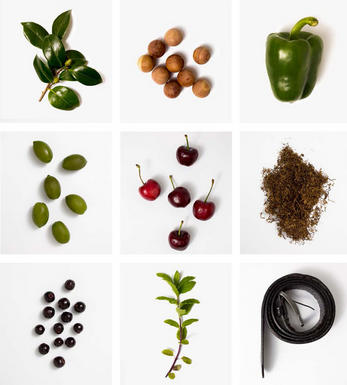
Cabernet Sauvignon Blend
Cabernet Sauvignon lends itself particularly well in blends with Merlot. This is actually the archetypal Bordeaux blend, though in different proportions in the sub-regions and sometimes topped up with Cabernet Franc, Malbec, and Petit Verdot.
In the Médoc and Graves the percentage of Cabernet Sauvignon in the blend can range from 95% (Mouton-Rothschild) to as low as 40%. It is particularly suited to the dry, warm, free- draining, gravel-rich soils and is responsible for the redolent cassis characteristics as well as the depth of colour, tannic structure and pronounced acidity of Médoc wines. However 100% Cabernet Sauvignon wines can be slightly hollow-tasting in the middle palate and Merlot with its generous, fleshy fruit flavours acts as a perfect foil by filling in this cavity.
In St-Emilion and Pomerol, the blends are Merlot dominated as Cabernet Sauvignon can struggle to ripen there - when it is included, it adds structure and body to the wine. Sassicaia is the most famous Bordeaux blend in Italy and has spawned many imitations, whereby the blend is now firmly established in the New World and particularly in California and Australia.


Buying options
Add to wishlist
Description
We usually struggle with tasting Montrose this early on in its life. It’s not only because it is the most Northerly “Super Second” and really tends to need that shot of Indian Summer to finish it off, but you also try a couple of their other wines first, which are ok but very firm, structured, tannic and ungenerous affairs and when you come to taste La Dame and the Grand Vin your mouth is coated with high levels of tannin and acidity.
However, this year, the Grand Vin brushes away everything in its path with its rich, multidimensional, complex, and, honestly, glorious weight, power and fruit. The team was a little split on this, but this Montrose, for me is more subtle and refined and consequently far more rewarding than the dynamic duo of 2009/2010. It may also surprise us with a reasonably affordable price. Fabulous.
Simon Staples, Asia Wine Director, Berry Bros. & Rudd
wine at a glance
Delivery and quality guarantee